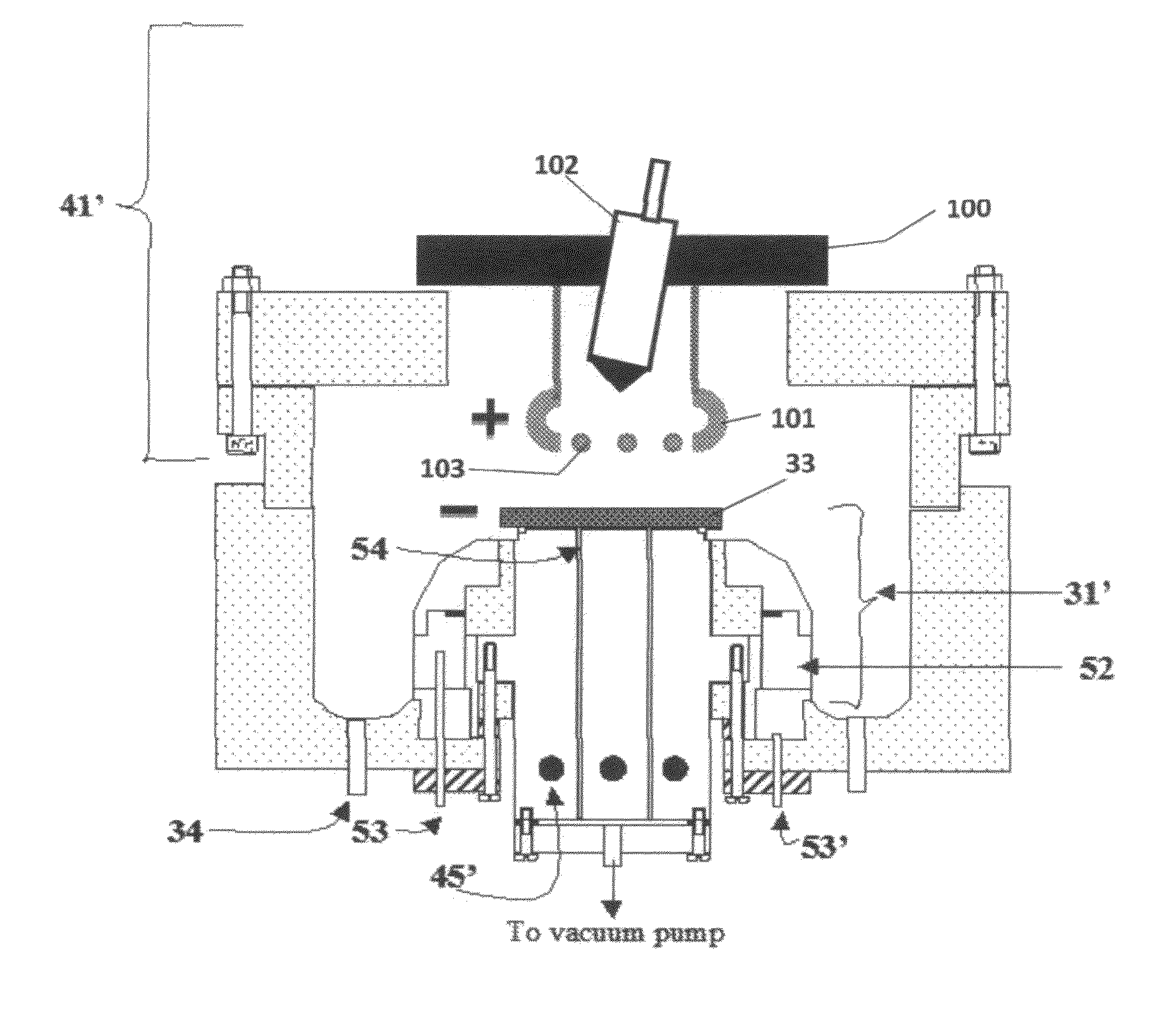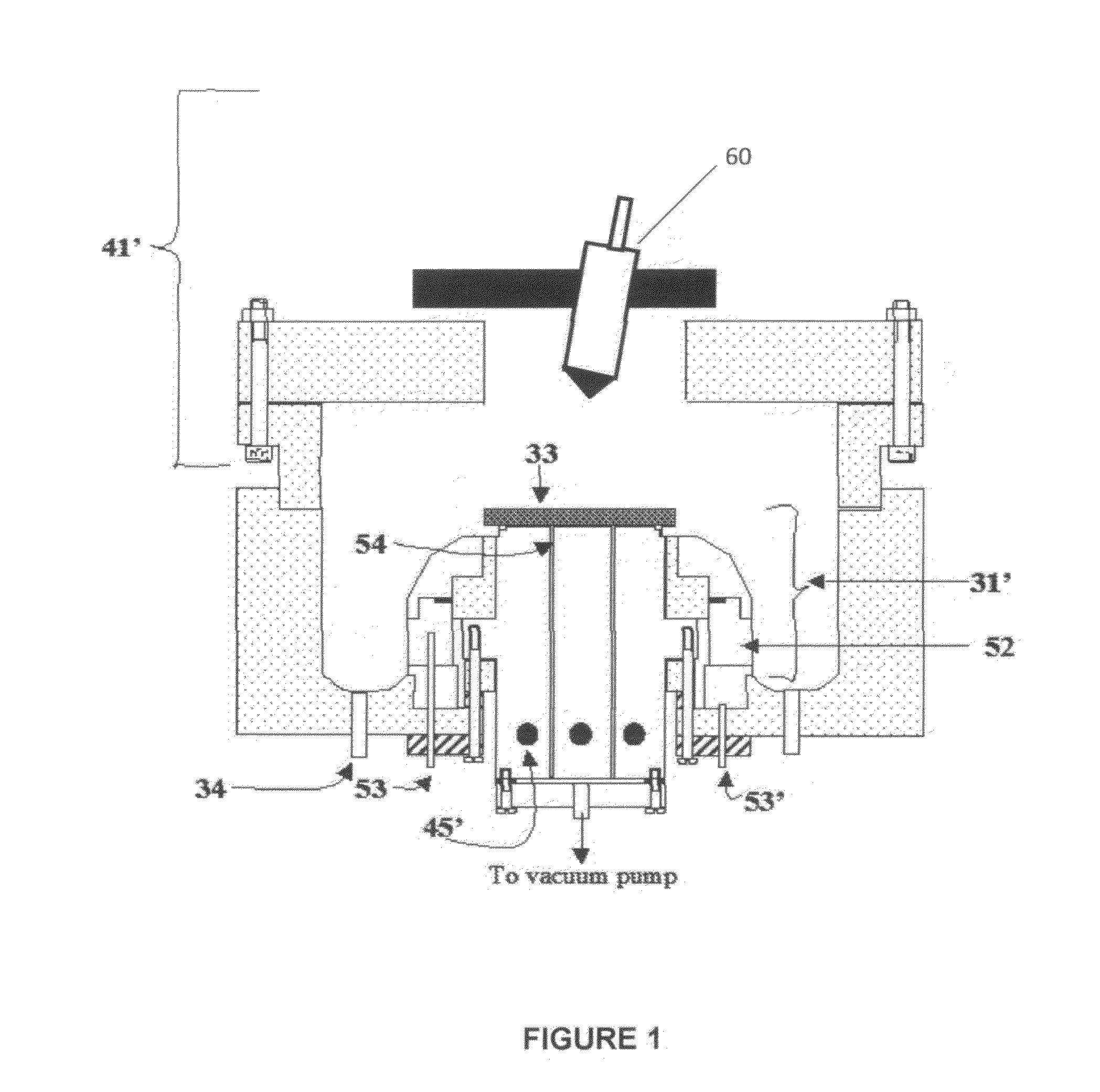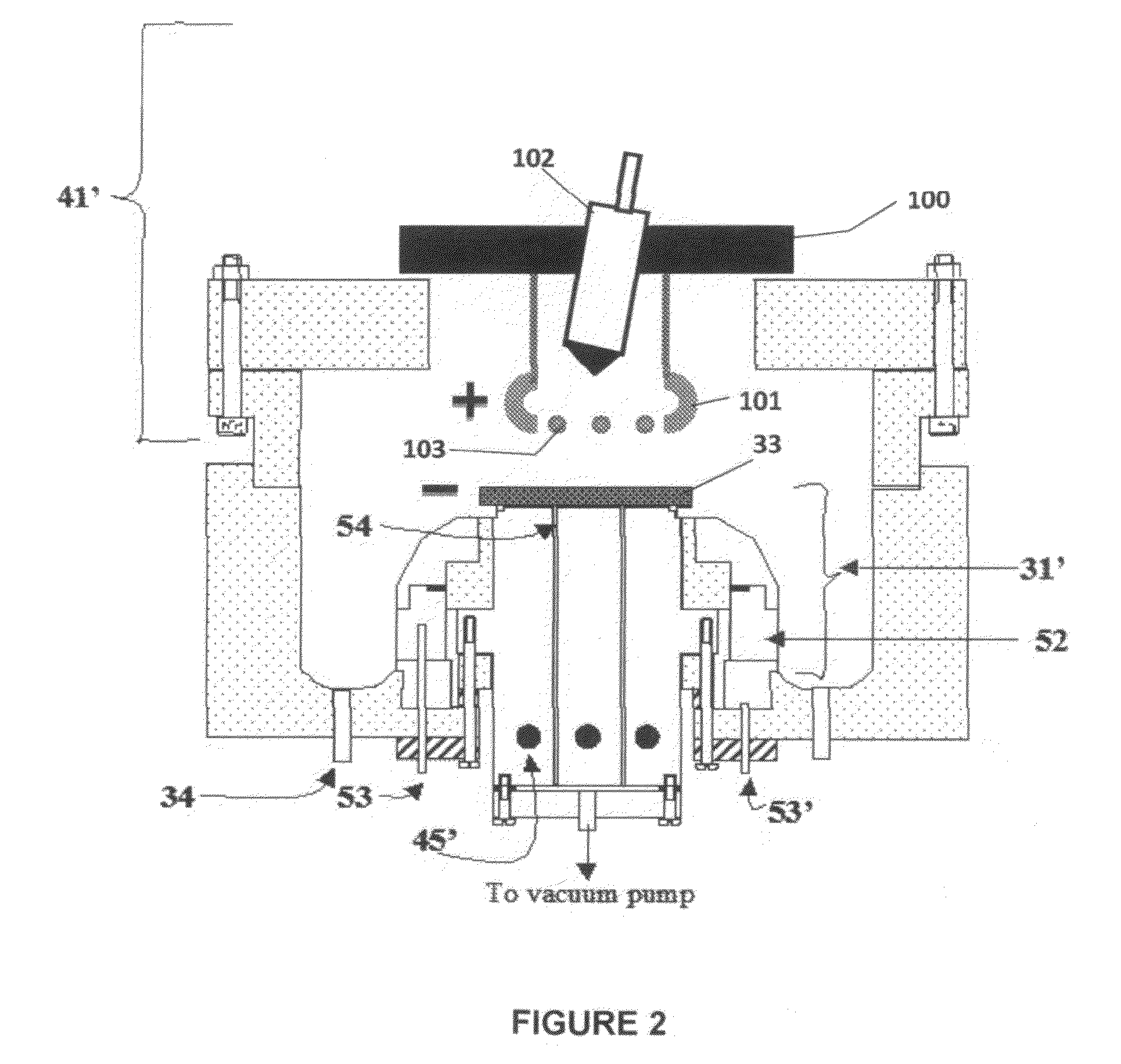Apparatus and method for depositing alkali metals
- Summary
- Abstract
- Description
- Claims
- Application Information
AI Technical Summary
Benefits of technology
Problems solved by technology
Method used
Image
Examples
example
[0091]Referring to FIG. 7, electrolyte matrix 11′ may be deposited on an anode-coated substrate 10′″ as shown earlier in FIG. 6. Li 12 is deposited and reacted as before to form electrolyte 13. Substrate 10′ is coated with cathode material 14 and then a layer of Li-ion conductive adhesive 19 is applied. The adhesive is a reported mixture of polyvinylidene fluoride / hexafluoropropylene copolymer (PVDF / HFP), dissolved in dimethoxyethane (DME), and 1.5M LiPF6 in EC / PC 30% solution heated to 50° C. in closed vessel, then cool to room temperature. The two halves of the cell are hot pressed together using the ion-conductive adhesive 19 to form an ion-conductive mechanical bond, thereby completing the cell. It will be appreciated that the ion-conductive adhesive 19 may alternatively be applied to the anode-coated substrate as shown schematically in FIG. 8.
PUM
| Property | Measurement | Unit |
|---|---|---|
| Temperature | aaaaa | aaaaa |
| Temperature | aaaaa | aaaaa |
| Electric potential / voltage | aaaaa | aaaaa |
Abstract
Description
Claims
Application Information
 Login to View More
Login to View More - R&D
- Intellectual Property
- Life Sciences
- Materials
- Tech Scout
- Unparalleled Data Quality
- Higher Quality Content
- 60% Fewer Hallucinations
Browse by: Latest US Patents, China's latest patents, Technical Efficacy Thesaurus, Application Domain, Technology Topic, Popular Technical Reports.
© 2025 PatSnap. All rights reserved.Legal|Privacy policy|Modern Slavery Act Transparency Statement|Sitemap|About US| Contact US: help@patsnap.com



